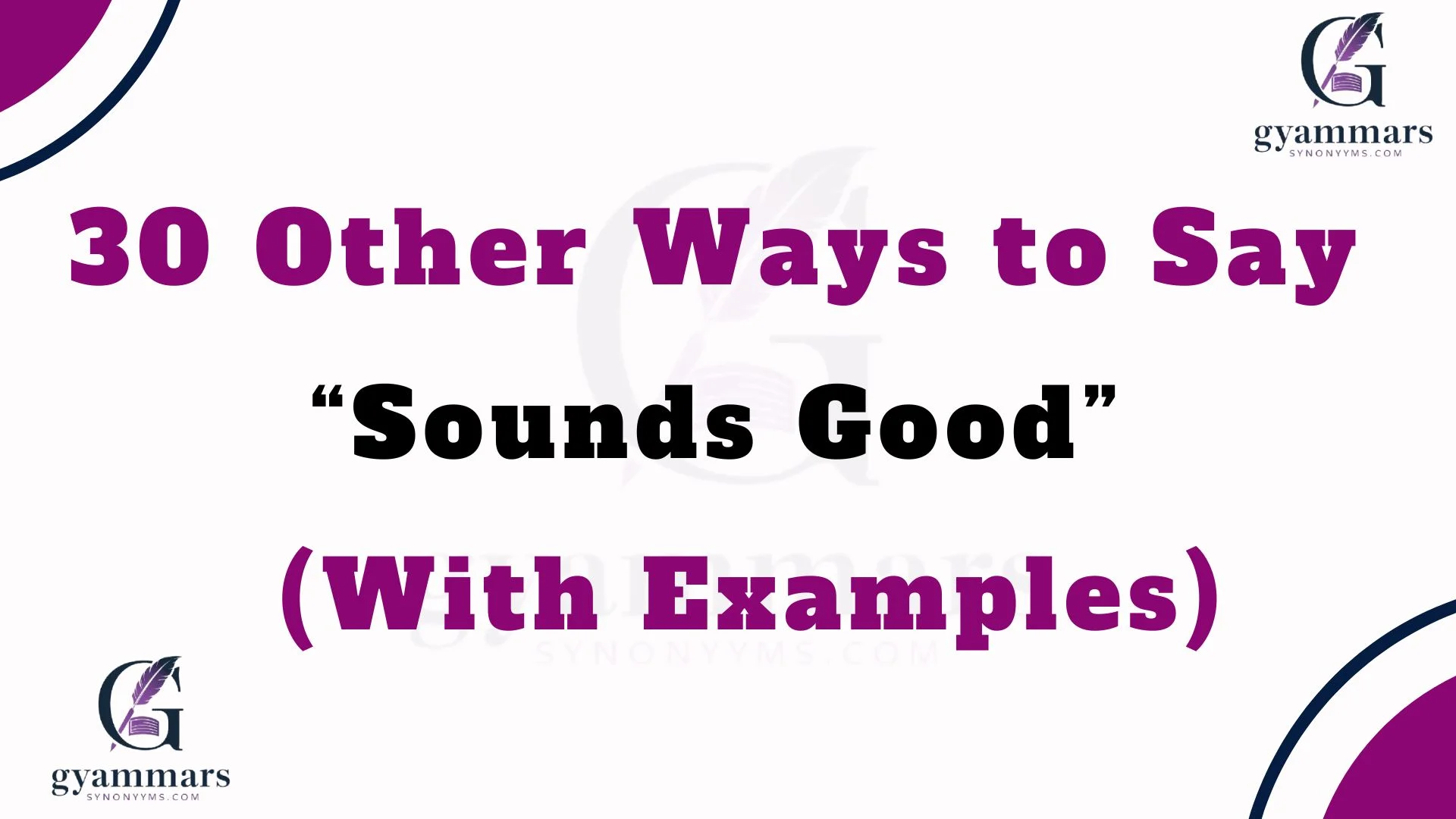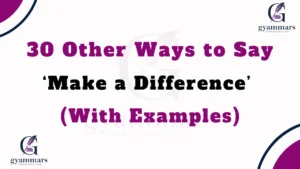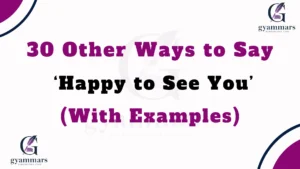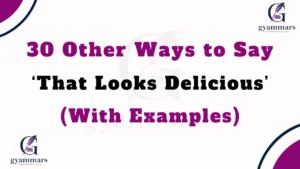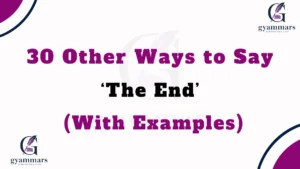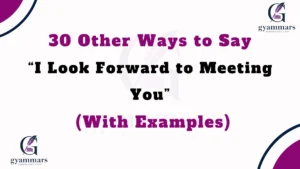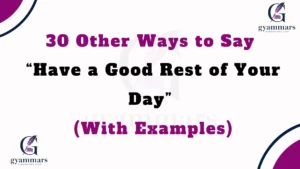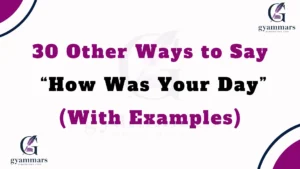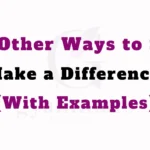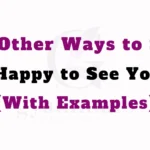Communicating effectively is more than just choosing the right words—it’s about conveying warmth, care, and thoughtfulness. While saying “Sounds good” is common, exploring alternative expressions can make your messages feel more personal and meaningful, whether in casual conversations, professional emails, or friendly texts. This guide will provide 30 versatile ways to express agreement or approval, along with examples, explanations, and tips for best use.
What Does “Sounds Good” Mean?
Definition: “Sounds good” is a casual way to express agreement, approval, or satisfaction with a proposal, suggestion, or idea.
Detailed Explanation: It signals that you are on board or that something is acceptable to you.
Scenario Examples:
- Friend: “Do you want to meet at 6 PM?”
- You: “Sounds good!”
Best Use: Informal conversations with friends, colleagues, or acquaintances.
Tone: Friendly, agreeable, casual.
Additional Notes: While widely understood, it may seem informal in highly professional settings.
Is It Professional/Polite to Say “Sounds Good”?
Definition: This phrase is generally friendly and neutral, but its appropriateness depends on context.
Detailed Explanation: In professional emails, using alternatives like “That works for me” or “Understood” may convey a more polished tone.
Scenario Examples:
- Email to a colleague: “We’ll start the meeting at 10 AM.”
- Response: “Sounds good” (okay informally) vs. “That works perfectly, thank you” (more professional).
Best Use: Everyday conversations and casual workplace exchanges.
Tone: Neutral, casual.
Additional Notes: Avoid overuse in formal communication; consider context before using.
Pros and Cons of Saying “Sounds Good”
Pros:
- Quick and easy.
- Friendly and approachable.
- Universally understood.
Cons:
- Can feel informal in formal contexts.
- May lack enthusiasm or nuance.
- Overused in digital communication.
Synonyms For “Sounds Good”
- That Works
- Perfect
- Absolutely
- Sure Thing
- Sounds Like a Plan
- Great
- I’m In
- Works for Me
- Excellent
- Cool
- Sounds Excellent
- That’s Fine
- I Like It
- By All Means
- Of Course
- That Sounds Perfect
- I’m Good With That
- That’ll Do
- Sounds Like a Winner
- Fine By Me
- I’m On Board
- Works Perfectly
- That’s Great
- Sounds Like a Plan to Me
- That’s Fine With Me
- Works Out
- Sounds Positive
- I Approve
- Works Like a Charm
- All Set
1. That Works
Definition: A simple way to show agreement.
Detailed Explanation: Conveys that the proposed plan is acceptable and practical.
Scenario Examples:
- “Let’s meet at 3 PM.”
- “That works.”
Best Use: Casual and semi-formal situations.
Tone: Neutral, agreeable.
Additional Notes: More professional than “sounds good” in some workplace contexts.
2. Perfect
Definition: Expresses strong approval or satisfaction.
Detailed Explanation: Implies that the idea or plan is exactly what you wanted.
Scenario Examples:
- “I’ve booked the tickets for Saturday.”
- “Perfect!”
Best Use: When genuinely enthusiastic about the plan.
Tone: Positive, enthusiastic.
Additional Notes: Avoid overuse; may sound exaggerated if used too frequently.
3. Absolutely
Definition: Strong affirmation or agreement.
Detailed Explanation: Conveys certainty and support for a suggestion.
Scenario Examples:
- “Do you want to join the project?”
- “Absolutely.”
Best Use: Emphasizing agreement, especially in conversations needing confidence.
Tone: Confident, assertive.
Additional Notes: Works well in both casual and professional settings.
4. Sure Thing
Definition: Informal way to agree or confirm.
Detailed Explanation: Suggests casual and friendly acceptance.
Scenario Examples:
- “Can you help me with this task?”
- “Sure thing!”
Best Use: Informal conversations with friends or colleagues.
Tone: Friendly, casual.
Additional Notes: Avoid in formal emails.
5. Sounds Like a Plan
Definition: Indicates agreement and readiness to follow a suggested plan.
Detailed Explanation: Slightly more descriptive than “sounds good.”
Scenario Examples:
- “We’ll go hiking at 8 AM.”
- “Sounds like a plan.”
Best Use: Informal and collaborative settings.
Tone: Friendly, optimistic.
Additional Notes: Adds a playful or enthusiastic vibe.
6. Great
Definition: Expresses approval or excitement.
Detailed Explanation: Short and impactful acknowledgment of an idea.
Scenario Examples:
- “I’ve finished the report.”
- “Great!”
Best Use: General positive response.
Tone: Cheerful, positive.
Additional Notes: Works in most casual and professional situations.
7. I’m In
Definition: Expresses personal commitment or participation.
Detailed Explanation: Indicates eagerness and agreement to join or support.
Scenario Examples:
- “We’re forming a new team for the project.”
- “I’m in.”
Best Use: Informal group or team settings.
Tone: Enthusiastic, committed.
Additional Notes: Best for casual and semi-formal contexts.
8. Works for Me
Definition: Confirms that the proposed plan is suitable.
Detailed Explanation: Casual, flexible way to indicate approval.
Scenario Examples:
- “Meeting at 2 PM?”
- “Works for me.”
Best Use: Informal or collaborative professional contexts.
Tone: Neutral, agreeable.
Additional Notes: Safe and widely accepted.
9. Excellent
Definition: Conveys strong satisfaction and approval.
Detailed Explanation: More formal than “great” and often used to compliment decisions or results.
Scenario Examples:
- “Your proposal has been accepted.”
- “Excellent!”
Best Use: Professional and personal scenarios where strong positive feedback is needed.
Tone: Professional, appreciative.
Additional Notes: Can emphasize enthusiasm in meetings or messages.
10. Cool
Definition: Informal, friendly way to express agreement.
Detailed Explanation: Signals that you are okay with the plan.
Scenario Examples:
- “I’ll pick you up at 7.”
- “Cool.”
Best Use: Casual conversations.
Tone: Relaxed, casual.
Additional Notes: Avoid in formal settings; may seem too casual.
11. Sounds Excellent
Definition: A polished version of “sounds good.”
Detailed Explanation: Implies positivity and approval with a professional tone.
Scenario Examples:
- “We’ll submit the project by Friday.”
- “Sounds excellent.”
Best Use: Semi-formal emails or meetings.
Tone: Positive, professional.
Additional Notes: Slightly more formal and polished.
12. That’s Fine
Definition: Polite acknowledgment of agreement.
Detailed Explanation: Neutral and agreeable response.
Scenario Examples:
- “Can we change the meeting to 4 PM?”
- “That’s fine.”
Best Use: Neutral professional or casual situations.
Tone: Calm, polite.
Additional Notes: Safe choice in uncertain contexts.
13. I Like It
Definition: Expresses personal approval.
Detailed Explanation: Slightly more personal than “sounds good.”
Scenario Examples:
- “I redesigned the slide.”
- “I like it.”
Best Use: When you want to convey personal endorsement.
Tone: Warm, friendly.
Additional Notes: Shows engagement with the idea.
14. By All Means
Definition: Strong permission or agreement.
Detailed Explanation: Suggests you are fully supportive.
Scenario Examples:
- “Can I borrow your notes?”
- “By all means.”
Best Use: Polite and slightly formal contexts.
Tone: Respectful, accommodating.
Additional Notes: Adds sophistication to casual agreement.
15. Of Course
Definition: Expresses certainty and willingness.
Detailed Explanation: Slightly warmer than “sure.”
Scenario Examples:
- “Can you join us for lunch?”
- “Of course!”
Best Use: Friendly, polite confirmation.
Tone: Warm, confident.
Additional Notes: Works in both casual and formal settings.
16. That Sounds Perfect
Definition: Indicates strong enthusiasm for a plan.
Detailed Explanation: Shows excitement and approval.
Scenario Examples:
- “Dinner at 7 works?”
- “That sounds perfect.”
Best Use: When the plan aligns well with your preferences.
Tone: Positive, enthusiastic.
Additional Notes: Slightly more expressive than “sounds good.”
17. I’m Good With That
Definition: Casual way to confirm agreement.
Detailed Explanation: Neutral and informal acceptance.
Scenario Examples:
- “We’ll leave at 5.”
- “I’m good with that.”
Best Use: Informal conversations.
Tone: Relaxed, casual.
Additional Notes: Common in everyday speech.
18. That’ll Do
Definition: Suggests acceptance even if it’s not perfect.
Detailed Explanation: Conveys practicality over perfection.
Scenario Examples:
- “I can finish the slides by 6 PM.”
- “That’ll do.”
Best Use: Casual or practical discussions.
Tone: Neutral, pragmatic.
Additional Notes: Avoid in very formal contexts.
19. Sounds Like a Winner
Definition: Enthusiastic approval for a choice.
Detailed Explanation: Slightly playful and encouraging.
Scenario Examples:
- “Shall we go with this design?”
- “Sounds like a winner.”
Best Use: Friendly or team-based environments.
Tone: Positive, motivating.
Additional Notes: Adds excitement to agreement.
20. Fine By Me
Definition: Casual affirmation of agreement.
Detailed Explanation: Indicates that you are okay with the proposal.
Scenario Examples:
- “We can start at 8.”
- “Fine by me.”
Best Use: Casual conversations.
Tone: Neutral, agreeable.
Additional Notes: Friendly and informal.
21. I’m On Board
Definition: Expresses full agreement and willingness to participate.
Detailed Explanation: Suggests commitment and involvement.
Scenario Examples:
- “We’re launching the campaign next week.”
- “I’m on board.”
Best Use: Collaborative professional settings.
Tone: Enthusiastic, committed.
Additional Notes: Stronger than just “sounds good.”
22. Works Perfectly
Definition: Confirms that the plan fits exactly.
Detailed Explanation: Expresses precise alignment with your preferences.
Scenario Examples:
- “Meeting at 9?”
- “Works perfectly.”
Best Use: Professional and casual.
Tone: Positive, professional.
Additional Notes: Slightly more polished than “sounds good.”
23. That’s Great
Definition: Expresses approval and positivity.
Detailed Explanation: Adds warmth and friendliness.
Scenario Examples:
- “I’ve finished the task.”
- “That’s great.”
Best Use: Informal and professional contexts.
Tone: Cheerful, appreciative.
Additional Notes: Safe choice in most settings.
24. Sounds Like a Plan to Me
Definition: Slightly personalized confirmation.
Detailed Explanation: Indicates you’re fully supportive of the plan.
Scenario Examples:
- “We’ll meet at 4?”
- “Sounds like a plan to me.”
Best Use: Friendly and collaborative conversations.
Tone: Positive, casual.
Additional Notes: More personal than just “sounds like a plan.”
Also Read This : 30 Other Ways to Say ‘I Agree With You’ Formally (With Examples)
25. That’s Fine With Me
Definition: Polite, agreeable response.
Detailed Explanation: Confirms acceptance without fuss.
Scenario Examples:
- “Can we start at 10?”
- “That’s fine with me.”
Best Use: Neutral, polite situations.
Tone: Calm, polite.
Additional Notes: Safe choice for uncertain contexts.
26. Works Out
Definition: Suggests practicality and agreement.
Detailed Explanation: Implies that the plan is feasible.
Scenario Examples:
- “We can meet Friday afternoon.”
- “Works out.”
Best Use: Casual or collaborative discussions.
Tone: Neutral, agreeable.
Additional Notes: Slightly informal.
27. Sounds Positive
Definition: Neutral affirmation with a slight upbeat tone.
Detailed Explanation: Signals approval with optimism.
Scenario Examples:
- “The test results came back.”
- “Sounds positive.”
Best Use: Casual and professional updates.
Tone: Optimistic, polite.
Additional Notes: Slightly formal alternative.
28. I Approve
Definition: Clear confirmation and endorsement.
Detailed Explanation: Strong acknowledgment of agreement.
Scenario Examples:
- “Do you approve this plan?”
- “I approve.”
Best Use: Formal approval in professional contexts.
Tone: Formal, decisive.
Additional Notes: Stronger than casual alternatives.
29. Works Like a Charm
Definition: Suggests perfection and satisfaction.
Detailed Explanation: Adds a playful or enthusiastic tone to approval.
Scenario Examples:
- “The software update went smoothly.”
- “Works like a charm.”
Best Use: Friendly and informal scenarios.
Tone: Cheerful, casual.
Additional Notes: Informal; conveys satisfaction.
30. All Set
Definition: Indicates readiness and agreement.
Detailed Explanation: Confirms that everything is good to proceed.
Scenario Examples:
- “Are you ready for the trip?”
- “All set.”
Best Use: Casual and friendly confirmations.
Tone: Positive, ready.
Additional Notes: Simple and concise acknowledgment.
Conclusion
Choosing the right words can transform casual conversations into meaningful connections. While “Sounds good” works well, these 30 alternatives allow you to convey agreement with warmth, professionalism, or enthusiasm depending on the context. By understanding tone, context, and nuance, your responses can feel more thoughtful and personal, whether in a professional email, friendly chat, or collaborative setting.

“Emma Rose at Grammar Synonyms is your go-to expert for everything related to language and expression. Whether you’re refining your grammar, searching for the perfect synonym, or looking for creative ways to improve your writing, Emma Rose provides the tools and inspiration you need. With a wide range of resources designed to elevate your communication, Grammar Synonyms helps you find just the right words to make every sentence shine.
